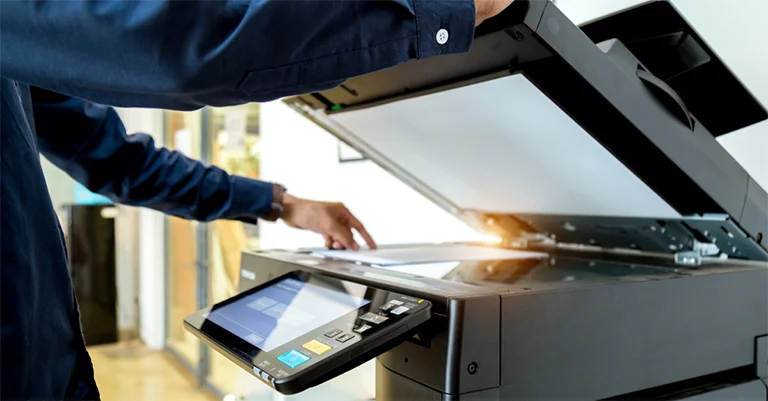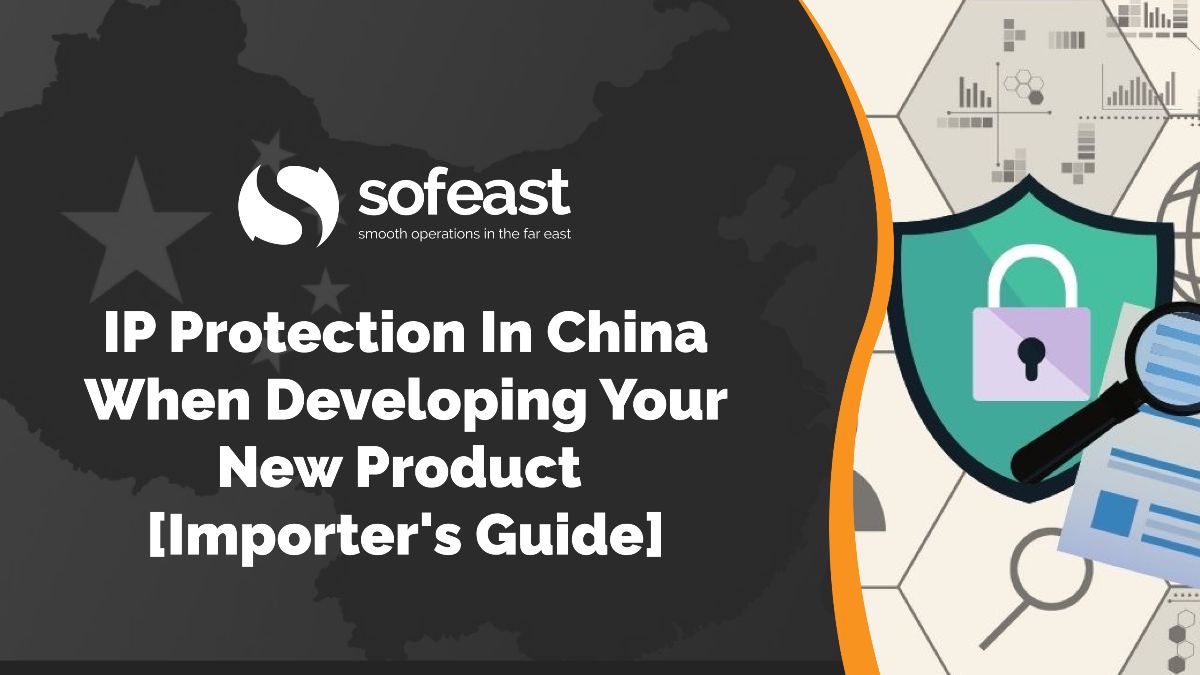For certain types of products (electrical, plastic injection etc.) Chinese manufacturers are often the best source. Production can be performed with relatively high quality and a relatively low cost. However, one of China’s major weaknesses is its lack of respect of intellectual property rights.
It means many importers have to face a challenge: the emergence of copies of their proprietary products.
I made a list of strategies and tactics that should help you reduce this risk.
1. What to do at the sourcing stage
You need to prevent dangerous situations, and it starts at the sourcing stage.
1.1 Supplier selection
Work with foreign companies rather than Chinese companies if possible, and with large Chinese manufacturers that export most of their production rather than smaller and more domestic-oriented suppliers if possible.
This way the supplier will have a better understanding of, and a greater respect for, your IP rights.
1.2 Get suppliers to sign a contract
Forget about NDAs. China business law specialists can draft a contract that addresses the real risks facing importers. You can read more details here on the China Law Blog.
Naturally, do this before communicating any technical information to anybody.
1.3 Register your intellectual property rights
Consult a lawyer about the need to register your IP in the form of trademark, patent, etc. It is quite common for a Chinese company to register a foreign company’s IP.
1.4 Don’t send product information to many companies
Qualify one factory before communicating your product information. Check their references if possible. Audit their production facilities. Check their design & engineering capabilities if you need custom development.
Here is one risk to avoid. Let’s say an importer asks two Chinese manufacturers to develop a new design. But only one gets the order. Here are two ways this can go wrong:
- The manufacturer that gets the order might try to produce the same design and sell it to other customers.
- The other manufacturer feels that he can do what he wants with the design. Since he did the hard work of developing prototypes, he will try to make money out of them through sales to other customers.
The downside of this approach is lower flexibility and higher business risk, since you are not developing a backup supplier.
1.5 Keep your supply chain as disjointed as possible
Purchase components from several factories, and keep the final operations separate from the rest of the steps, so that very few people can see the whole. This might be difficult in textile, for example, but easier with an electro-mechanical product.
For example, certain freight forwarders can handle the kitting, labeling, and/or packing. We can put you in touch with the right company if you are looking for this type of service.
2. The special case of molds and customized tooling
In case the manufacturer needs to create/buy tooling that is customized for your product, the risk is that they themselves keep using your mold to supply (or become) your competition. Fortunately, you can implement a few tactics.
2.1 Ensure a mark is placed on your molds
In Dan Harris’ words:
Identify the heck out of your molds by etching or engraving (in Chinese) the fact that the mold is your property and, if possible, do this both where it is obvious (to deter others) and where it is well hidden (to deter those who might try to remove your markings).
2.2 Get the molds wrapped up between two production runs
At the end of the final inspection (before the goods are shipped out), the inspector can wrap the molds, use proprietary adhesive tape, and then place some type of seal or a proprietary sticker on the wrapping.
The importer then instructs the supplier to only unwrap the whole package when the next production batch is to take place — but before the unwrapping the supplier must take a photo of the whole package with the day’s newpaper next to it (just like terrorists do to prove that someone is still alive at a certain date).
This sounds a bit complicated but it is not that hard to explain if you show photos of an example.
2.3 Transfer the molds to a separate place between 2 production runs
If your supplier is not cooperative and you don’t trust them, it makes sense to transfer the molds out of their factory. It is not a simple process.
3. Other strategies to reduce risks
Depending on the type of products you purchase, it is probably possible to get creative.
3.1 Controlling some components
Here is an example (source here):
One of Sunningdale’s clients, Hewlett-Packard, only supplies them with a certain number of print-heads for the ink cartridges they make for the company.
Without an excess of that key component, there is no way Sunningdale can manufacture any surplus ink cartridges, Mr Chan says.
3.2 Find ways to encrypt important information on technical files
For example, I was told a German company places a code on each drawing. For example, a certain code means “add 7% on all measurements”.
3.3 Make it impossible for one component supplier to make the whole product
For example, design 2 parts that control each other. (Obviously this is feasible for certain products with embedded electronics but not for garments or classic furniture.)
3.4 Don’t show your designs to everybody on trade shows
As I wrote before, here are the strategies that two friends who have sensitive IP use on a regular basis:
- One exhibits on a small booth at the Canton fair, and shows only his latest developments in silicon kitchenware. When people stop and show interest, my friend takes their name card, asks a few questions, and says “we’ll be in touch” (he takes the time to check them up before sending them photos, prices, and so on). And he makes sure no photo is taken on the spot. Two people can easily monitor a 9 sq.m. booth.
- The other one exhibits on the toy fair in HK. They have a big booth, with a third of the space open to the public and the rest as a private showroom. Only companies they trust are allowed in the showroom where the really unique designs are displayed.
4. Make enforcement easier
Let’s say you found a suspicious case. Before you can try to enforce your IP rights, you need to make sure there is infringement.
4.1 Use smart labeling for traceability
There are now solutions for generating barcodes that can’t be copied. For example, a company called Scantrust gives its customers a software that detects whether their QR codes are genuine or were copied.
4.2 Alter the product in an unpredictable way
I heard of a cookware brand that adds a weird substance in the formulation of its products. There is no reason to include that substance… which means a product that doesn’t include this substance was probably made by an unauthorized manufacturer. A simple chemical test is sufficient to prove this.
5. Make the infringers’ lives harder
Now let’s say you are sure a certain company is copying your product (or your own suppliers are selling your products without your approval).
5.1 Using lawyers
Whether you have a contract or not with the infringer, a lawyer can frighten them (for example with a demand letter) or sue them.
5. 2 Complain to the retailer or distributor
For example, you can complain on Taobao and they usually take pages/accounts down quickly if you can produce the evidence they require.
5.3 Give information to your country’s Customs
In some countries, customs fight counterfeits very seriously. If you can get information about the importing channel that get the copies into your country and if you registered your IP, you might be able to block the containers.
6. If there is nothing you can do…
In some cases, the only solution is to accelerate the pace at which you launch new products. In other words, always be one or two steps ahead. We discussed this in a past article about the product life cycle.
—
What do you think? Any other strategies?
Wondering where to start with IP protection in China?
When developing and manufacturing your new product in China protecting your product’s IP is a very valid concern. We’ve all heard about the various copycats there who can grab your IP, copy it, and beat you to market ~ that’s a nightmare for most businesses and entrepreneurs who’ve invested a lot of time, effort, and money into making their new product a reality!
So, to help you take control over your IP, we created this free guide over on Sofeast.com that guides you through how to protect IP, pitfalls to be wary of, and common activities and legal tools you need to utilize in order to reduce the risks of China IP theft.



Great list, Renaud.
Certainly agree that NDAs are meaningless and protection needs to be in the sales contract.
At Hornet Group we’ve had great success with splitting production between two manufacturers and an assembly operation. Of course it only works for more complex (industrial and electronic) products.
Textiles are usually easier to reverse engineer, so protection is harder. On the other hand, they tend to be short life-cycle and fashion / fad driven, so as you say it’s more about speed to market!
Very good! Thank you for your reminders